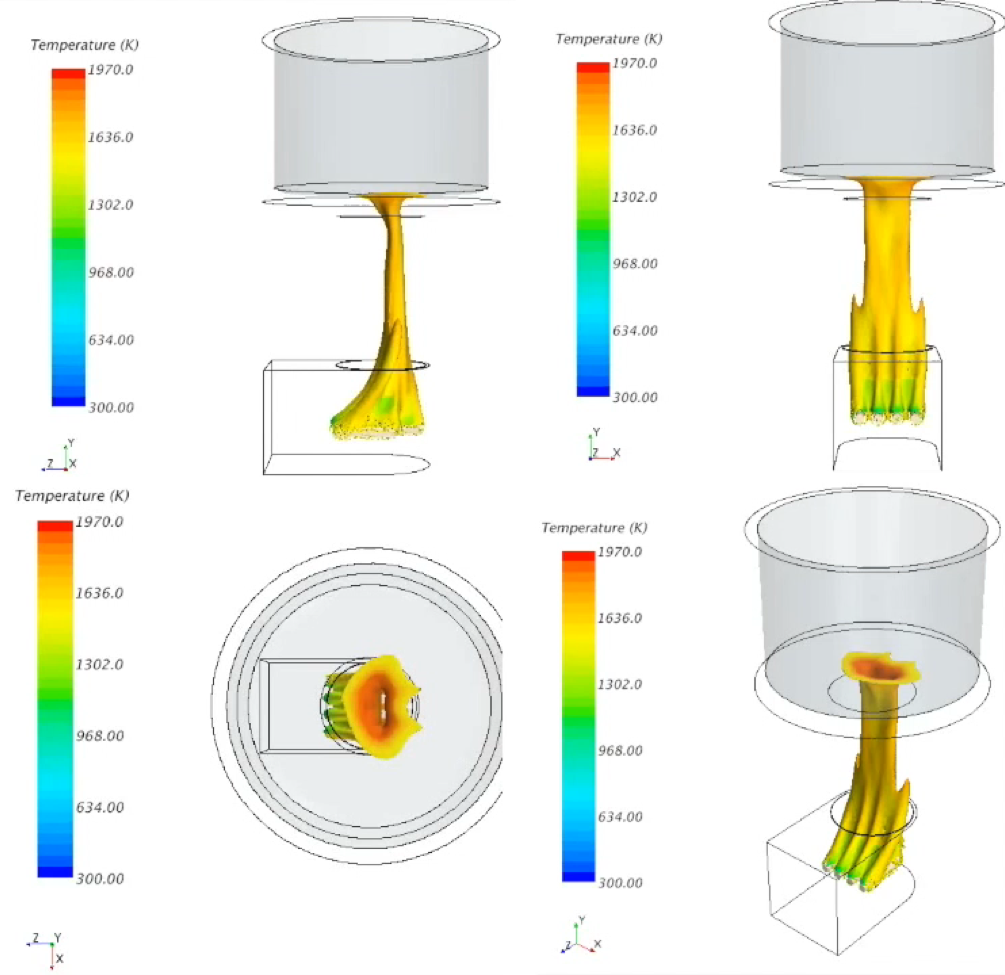We use numerical simulations of cookstoves to understand wood combustion, cookstove heat transfer and fluid mechanics, and guide stove design. We have developed a two dimensional axisymmetric CFD model of a natural draft cookstove that predicts excess air and heat transfer efficiency to the pot. The model uses the Eddy Dissipation Concept for combustion, with chemistry modeled by an 11 species, 40 step mechanism. Wood volatiles are modeled as a mixture of carbon monoxide, hydrogen, carbon dioxide and water.
We also have a easy-to-use transient, state-space heat transfer model capable of predicting stove efficiency with a small number of parameters. This model will soon be available online and using only geometry, materials, stove power and ambient conditions, can reliably predict stove efficiency and transient heat flux and stove component temperatures.
We are also working on a three dimensional transient CFD model which includes a soot sub-model to understand the processes of generation and destruction of soot inside the cookstove.


